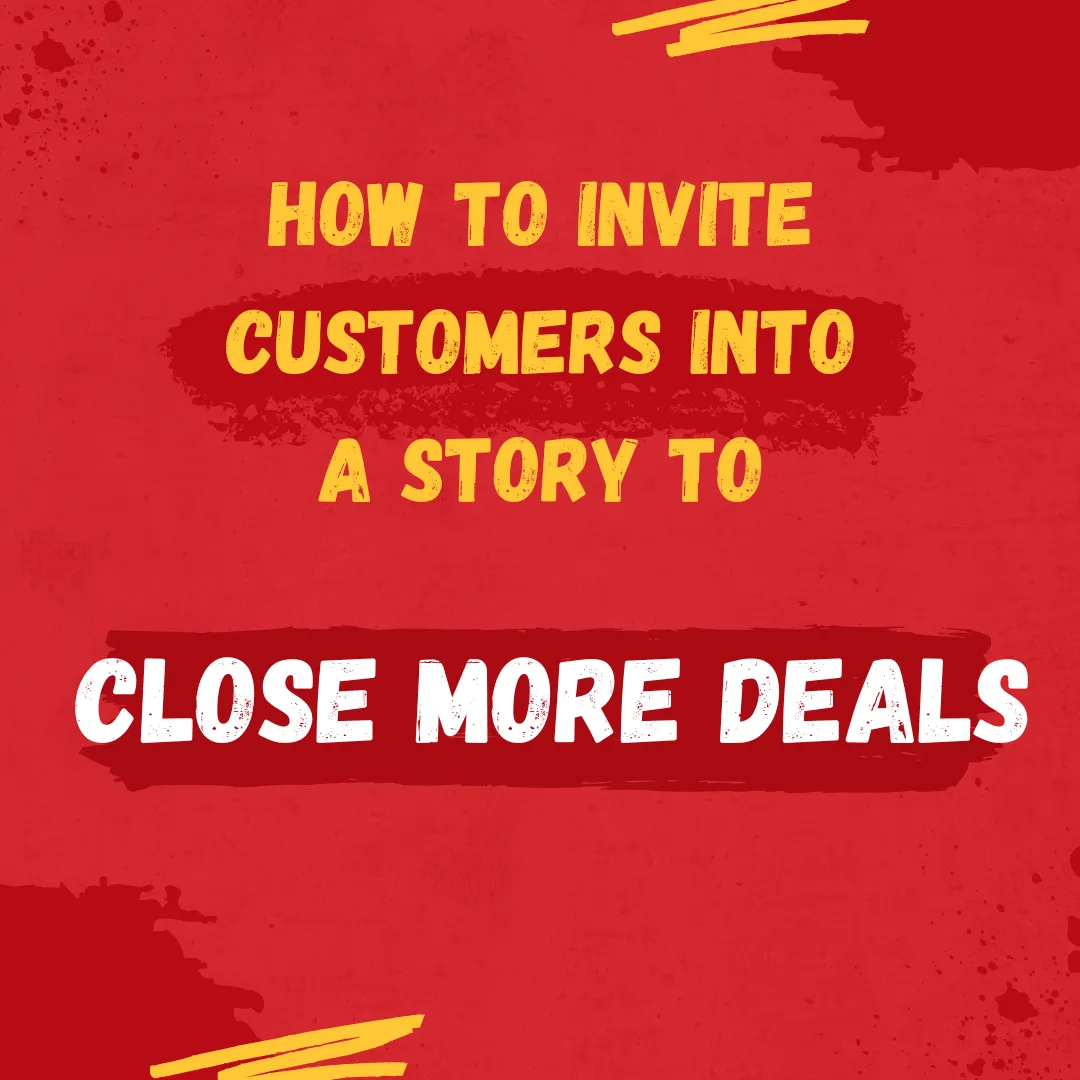ON THE BLOG

Customer is the Hero Framework by Donald Miller
AUGUST 13, 2024
Inviting a customer into a compelling story can revolutionize how you connect with potential clients and increase your sales. By making the customer the hero of their own story and positioning your product as the solution, you transform the sales conversation into a powerful narrative that leads to meaningful engagement and conversions.
Here’s how you can apply this strategy using a framework inspired by Donald Miller, known for his impactful storytelling techniques.
1. Start with a Problem
Every great story begins with a character facing a problem, and in your business context, that character is your customer. The initial step is to clearly identify and articulate the problem that your customer is facing. The better you understand and express this problem, the more effectively you can capture their attention and trigger their buying journey.
For example, if your target customer is struggling to manage their time effectively, you need to vividly describe this struggle. Show them that you understand their pain points and that you’re genuinely interested in helping them overcome these challenges. When customers feel understood, they are more likely to trust you and consider your solution.
2. Position Your Product as the Solution
Once you’ve identified the problem, the next step is to position your product or service as the ideal solution. Highlight how your offering directly addresses the customer’s needs and solves their issues.
To increase the perceived value of your product, clearly articulate the benefits. For instance, if you offer a time management tool, explain how it streamlines daily tasks and frees up valuable time, allowing customers to focus on more critical aspects of their business. This positioning not only showcases the value of your product but also builds trust and relevance.
3. Provide a Clear Plan
Customers need a clear, simple plan to follow. This step is crucial because it eliminates confusion and builds confidence in your product. Outline a three-step process that takes them from their problem to your solution.
For example, if you’re selling marketing software, your three-step plan could be:
Set Up Your Account: A quick and easy setup process to get started.
Create Your First Marketing Campaign: A guided approach to creating impactful campaigns.
Analyze Results and Optimize: Tools and insights to measure performance and make improvements.
By providing this roadmap, you make it easier for customers to see the path to success with your product, reducing any hesitation or fear of the unknown.
4. Create a Sense of Urgency by Painting the Stakes
Creating a sense of urgency is about explaining what is at stake if the customer doesn’t take action. This step involves highlighting both the negative consequences of inaction and the positive outcomes of choosing your solution.
For example, if customers continue to waste hours each day on ineffective tasks, they risk missing out on growth opportunities. On the flip side, using your time management tool can help them regain control of their schedule and significantly boost productivity. This dual approach makes the value of your solution more compelling and encourages quicker decision-making.
5. Invite the Customer to Place an Order
The final step is to confidently invite the customer to make a purchase. Use straightforward and assertive language that reinforces the value of your product and encourages them to take the next step.
For example, you could say, "Our time management tool is available today for just $29.99 a month. Are you ready to take control of your time and boost your productivity?" This direct approach helps the customer feel confident in their decision to buy, ultimately increasing conversions.
Leveraging the "Customer as the Hero" Framework Across Your Business
The "Customer as the Hero" framework doesn’t just apply to sales conversations—it’s a versatile strategy that can be integrated across various aspects of your business.
Marketing Material: Apply the principles in your marketing content, including landing pages, emails, and advertisements, to position your customer as the protagonist of their own story.
Customer Interactions: Use the framework in customer service interactions to better understand and solve customer problems, enhancing satisfaction and loyalty.
Sales Campaigns: Structure your sales and nurturing campaigns to focus on the customer’s journey, with your product or service as the guide helping them achieve their goals.
Conclusion: Transform Your Sales Approach
By positioning the customer as the hero and yourself as the guide, you build more positive, trust-based relationships that ultimately lead to increased sales and customer satisfaction. Remember to start by identifying their problem, position your product as the solution, give them a clear plan, create urgency, and confidently ask for the sale.
Implement these strategies today, and watch as your business transforms. The "Customer as the Hero" framework is more than just a sales tactic; it’s a way to connect with your audience on a deeper level, fostering long-term relationships and business success.
Start inviting your customers into their own story today and experience the difference it can make in closing more deals.

Privacy Policy | Terms of Service
